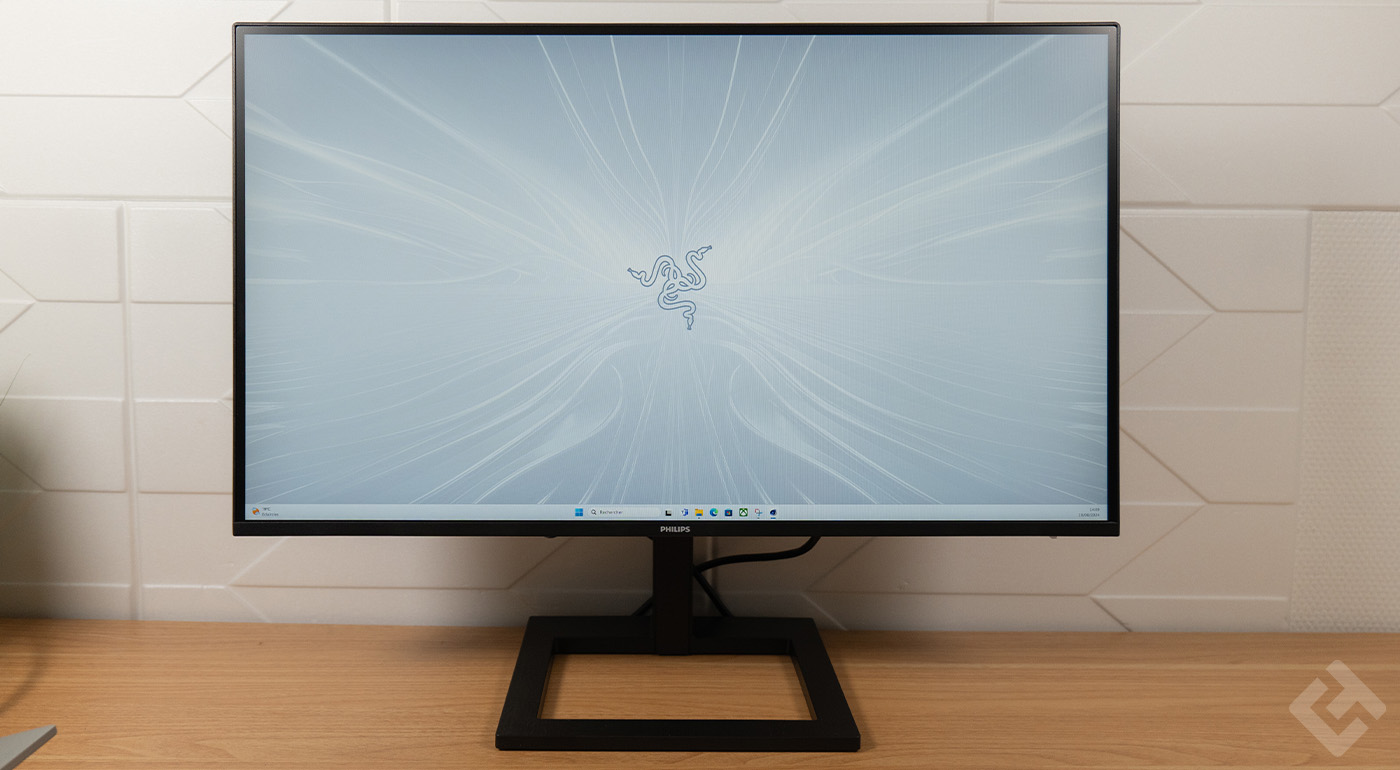The Philips 27 E1N1600 is a fairly classic PC monitor, without much pretension, but offering very decent performance for enhanced office use. Indeed, with its 100 Hz frequency, it offers more comfortable performance than a traditional 60 Hz screen, with enhanced fluidity here. So, what is this screen really worth? Let’s find out in the full test.
Design and package contents
Before talking about the aesthetics, let’s have a quick look at the contents of the pack. The latter is relatively straightforward here, featuring an HDMI cable, a power cable and a USB-C to USB-C cable. The latter is very interesting for connecting laptops in particular, but not really for connecting a fixed PC. Indeed, a laptop will be able to play video and be charged, while a fixed PC has no real use for USB-C to a screen.

As far as accessories are concerned, that’s all and that’s enough. The Philips 27 E1N1600 screen naturally comes with a stand, which is essential as not everyone has a VESA mount at home. This stand is quite aesthetic, I think, looking a bit like my MSI Prestige screen I had a few years ago. Admittedly, it’s not the elegant stand of the MSI Modern MD271UL, but it’s still pretty decent.

This rectangular stand, empty on the inside, can be used to store a few items, which is always handy. However, you still have to find what to put on it, but that’s not the main question. What I like most about this screen, however, are the ultra-thin edges on both the sides and the top. Although the bottom edge is also quite thin, with just enough room for a small brand logo, it’s enough, and that’s all we needed.
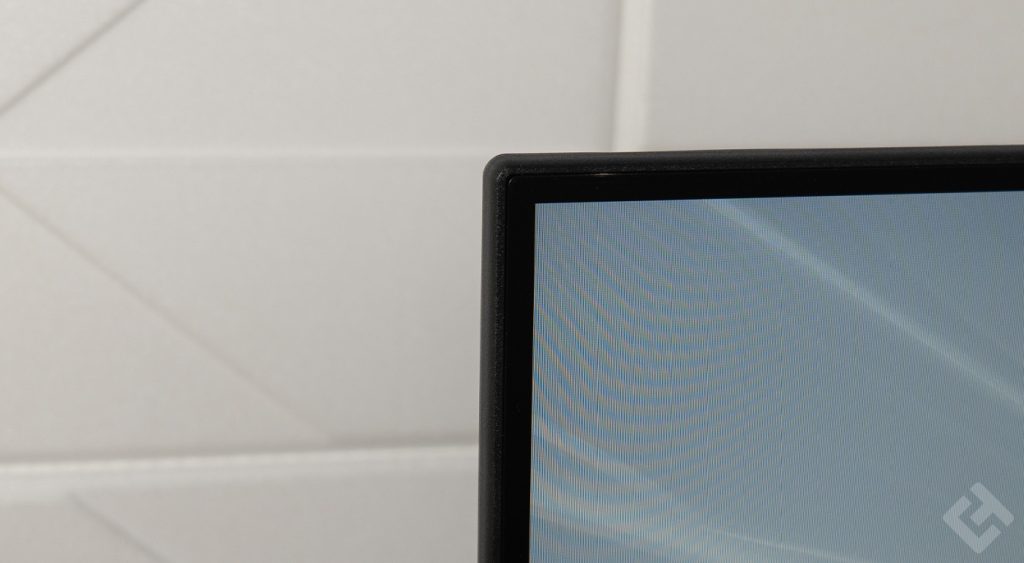
With its 27-inch size, it’s suitable for all uses, and its main use is office automation. That’s why this screen adopts a sober, unpretentious look, but also unpretentious connectivity on the back. With two USB-A ports, a USB-C connector and an HDMI input, the simple power connector, and that’s it!
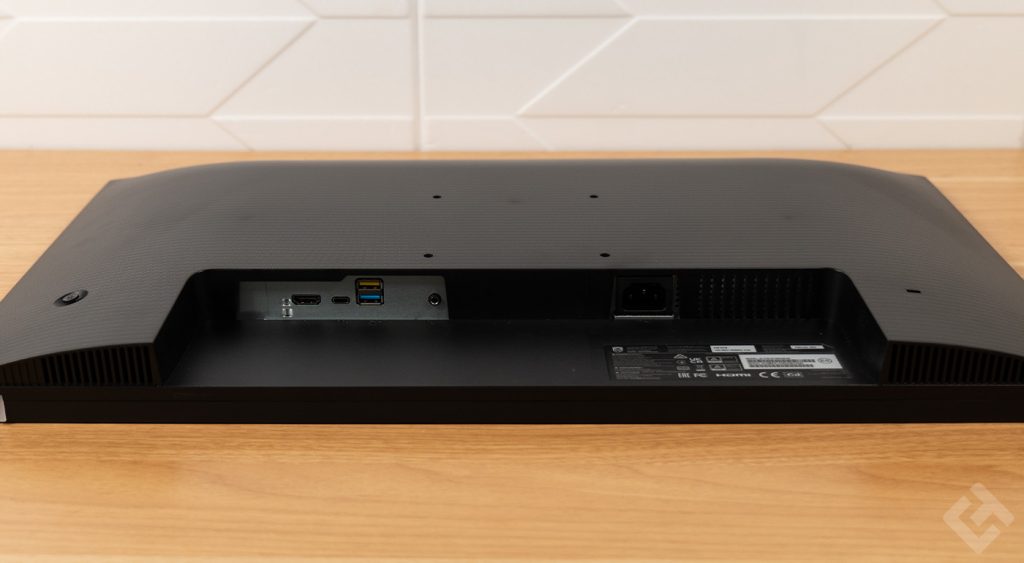
Note, however, that on the back, you’ll find a 100 x 100 mm VESA mount. It’s simpler for some people, it avoids having the stand on the desk, it’s really up to you, especially as the stand allows you to adjust the screen’s height, which is no luxury. It can be set excessively low, or quite high, but not too high either, to a height of 10 centimetres.
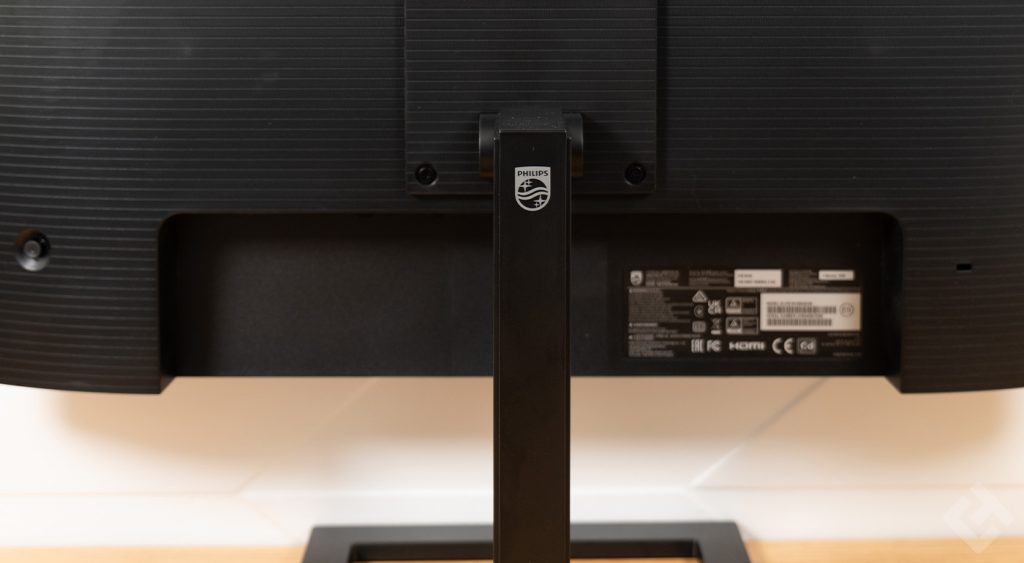
The screen can also be tilted from -5° to 20° if you need to orientate it differently, but it cannot be swivelled horizontally.
Philips 27 E1N1600 specifications
| Model | Philips 27 E1N1600 |
| Screen size | 27 inch |
| Screen format | 16:9 |
| Panel type | IPS |
| Colors | 16.7 million |
| Color space | 99% sRGB |
| Incurved | No |
| Resolution | 2560 x 1440 pixels |
| Refresh rate | 100 Hz |
| Brightness | 350 cd/m² brightness |
| Contrast | 1500:1 |
| Response time | 4 ms |
| Speakers | Yes: 2 x 2 W |
| FreeSync | N/C |
| G-Sync | No |
| Height adjustment | 100 mm |
| VESA support compatibility | 100 x 100 mm |
| Dimensions with stand / without stand | 617 mm wide with stand / 617 mm without stand 357 mm high with stand / 483 mm without stand 46 mm deep with stand / 220 mm deep without stand |
| Connections | 1 HDMI 2.0 1 3.5 mm jack 1 power port |
| Weight | Screen weight: 4 kg Total weight: 5.7 kg |
| Viewing angles | 178°/178° |
| OSD / Menu | Joystick |
Picture quality
In terms of image quality, it’s still decent, but it’s not a very well-calibrated screen from the factory either. Indeed, having measured the screen’s calibration with my XRite Display Pro probe and DisplayCal software, we immediately notice a major problem with the Delta E, which is very high.

Delta E represents color accuracy in relation to reality. On this point, the Philips 27 E1N1600 doesn’t really excel. With an average Delta E of more than 2 and a maximum of almost 6, it’s not catastrophic either, but it’s not an acceptable result. It is, however, possible to calibrate the screen with a dedicated probe, although you’ll need to buy one in the shops or have it loaned to you.
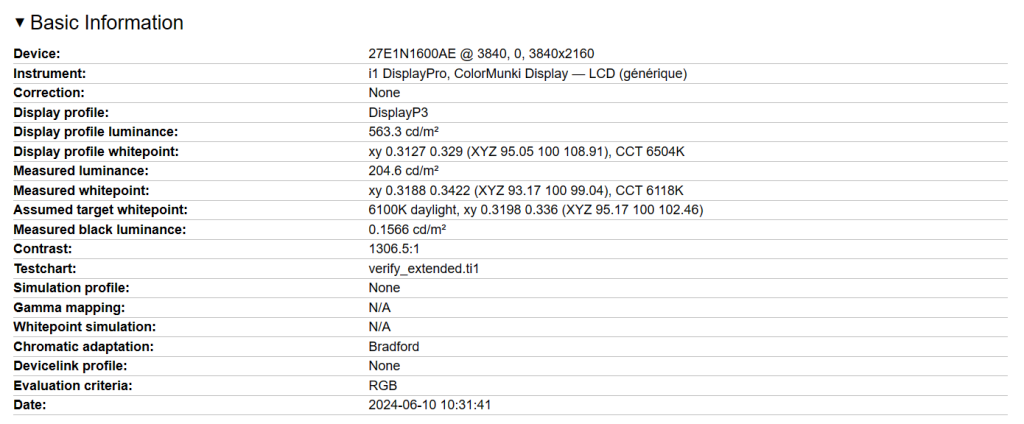
Slab brightness is decent, at just over 200 cd/m², which isn’t bad. It’s not the best brightness I’ve ever seen on a screen, but this is an unpretentious LCD panel, not an arrogant 1000-euro OLED one.
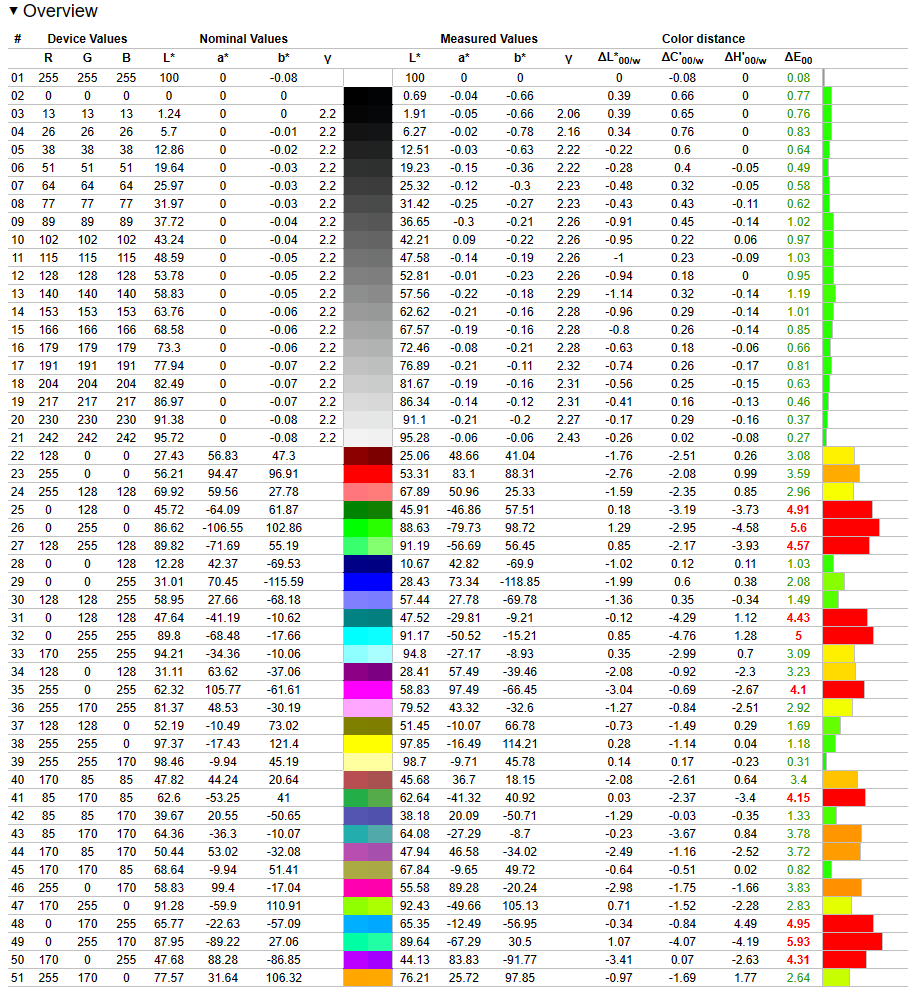
Finally, with regard to color accuracy in particular, black and gray tones are well managed, and Delta E is not too high. However, when you switch to certain color tones, the Delta E is very high, whereas on other colors, it remains very correct, if not excellent.
In terms of image quality, this 27-inch panel offers QHD definition, in other words, 2560 x 1440 pixels, so it’s suitable for an office or gaming screen. However, here, the slab frequency is 100 Hz, so I can’t see myself playing with this rather than with my Philips gaming screen in 144 Hz, but especially in 4K Ultra HD. However, for smooth and pleasant browsing, it’s true that it’s nice to have a higher frequency, as we’ve already seen on smartphones, tablets and some laptops.
Connectivity
In terms of connectivity, the Philips 27 E1N1600 is a relatively average performer. Let’s just say that I appreciate the fact that it can charge a laptop with its USB-C connector on the back, while transferring display data from the computer to the screen, but I regret that the overall connectivity is so light. In particular, there are only two additional USB-A connectors for connecting peripherals. Convenient, yes, but why not more?
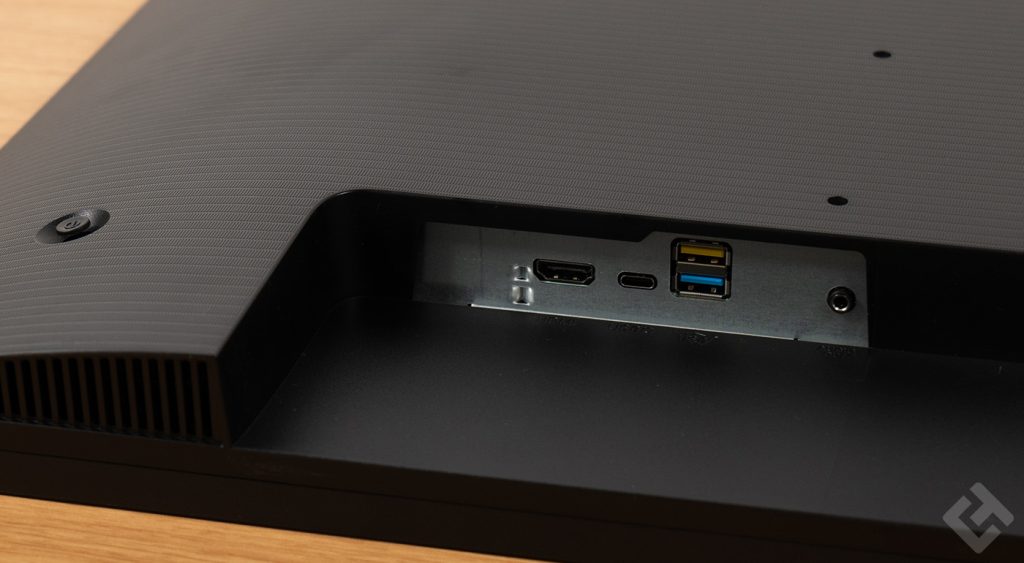
With this, an HDMI connector and that’s it! There’s no DisplayPort here, so it’s true that we don’t need it, but if someone with a single graphics card and two screens wanted to connect this screen, they’d have to buy an adapter, without being able to connect their second screen to DisplayPort.
There’s no 3.5 mm jack connector either, although I have to admit that it’s not essential, so there’s nothing dramatic here.
Ergonomics
The Philips 27 E1N1600 doesn’t do too badly in terms of ergonomics, with a single joystick-like knob on the back for easy adjustment. You still have to find it, but once you’ve got the hang of it, there’s nothing to worry about.
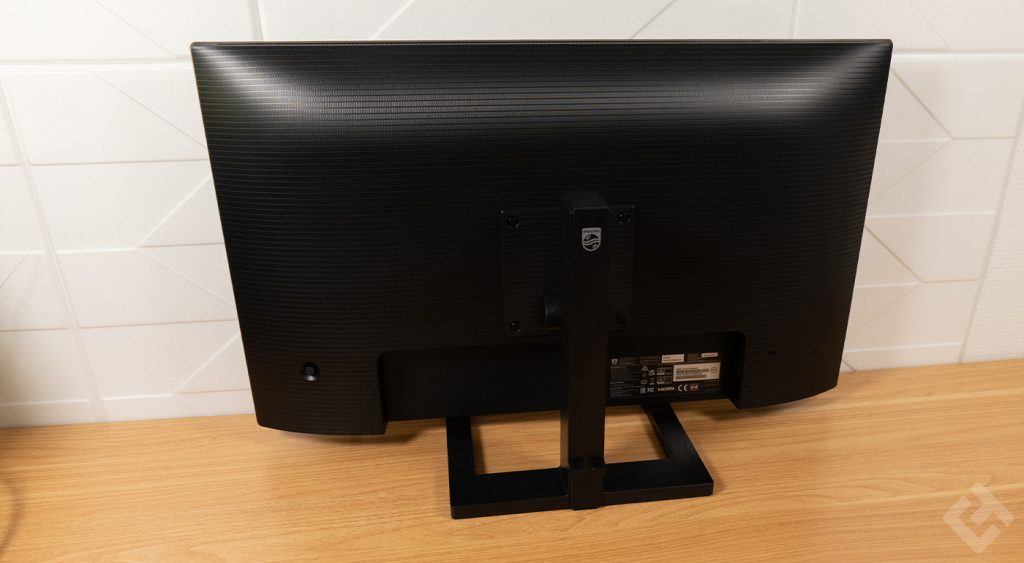
As for the rest of the ergonomics, as already mentioned, the Philips 27 E1N1600 can go up and down over an amplitude of 10 centimetres, which is still very decent, but the lowest level is almost flush with the foot. With this, the tilt from -5° to 20°, which remains very classic, but which allows you to turn the screen towards you if it’s a little high, in particular to lower it a little. Conversely, if it’s lower, you can raise it without worry.
Finally, a noteworthy detail is the presence of the activity LED in the bottom right-hand corner of the slab: white, very classic but effective.
OSD menu
The OSD menu on this Philips screen is very simple, but above all superbly comprehensive, something I didn’t expect from a screen in this category at an affordable price. First, there are the gaming mode settings, with a few parameters concerning frequency and so on.
Secondly, there are the blue light settings, to reduce blue light.
Then there’s the video input setting, either via USB-C or HDMI, nothing too fancy here.
The next section is for image settings, i.e. everything to do with colorimetry, although there’s more to come on this setting.
Then come the audio settings, with the possibility of setting these easily, but what interests me a little more are the color temperature settings right after.
I prefer a color temperature as cool as possible, but still reasonable, without going overboard with 8000K.
Finally, there are the USB settings, which are always handy, but not very useful. In any case, the connectors are used for accessories that remain there, such as external storage media, headphones or a 2.4 GHz mouse, etc.
Philips 27 E1N1600 : Reviews
For the performance/price ratio, frankly this screen isn’t bad, far from it. However, if gamers are around, I recommend they put a bit more money into their screen and buy a 240 Hz slab instead of 100 Hz. Otherwise, for working, it’s super pleasant, the brightness is correct, charging at 65 watts for USB-C-connected devices is ideal and the colors, while not perfect, are also correct to the eye.
One thing I appreciate here is the screen definition, 1440p, with the high frequency, which is frankly a very good thing for everyday comfort of use, at a time when our smartphones are adopting 120 Hz one by one!


